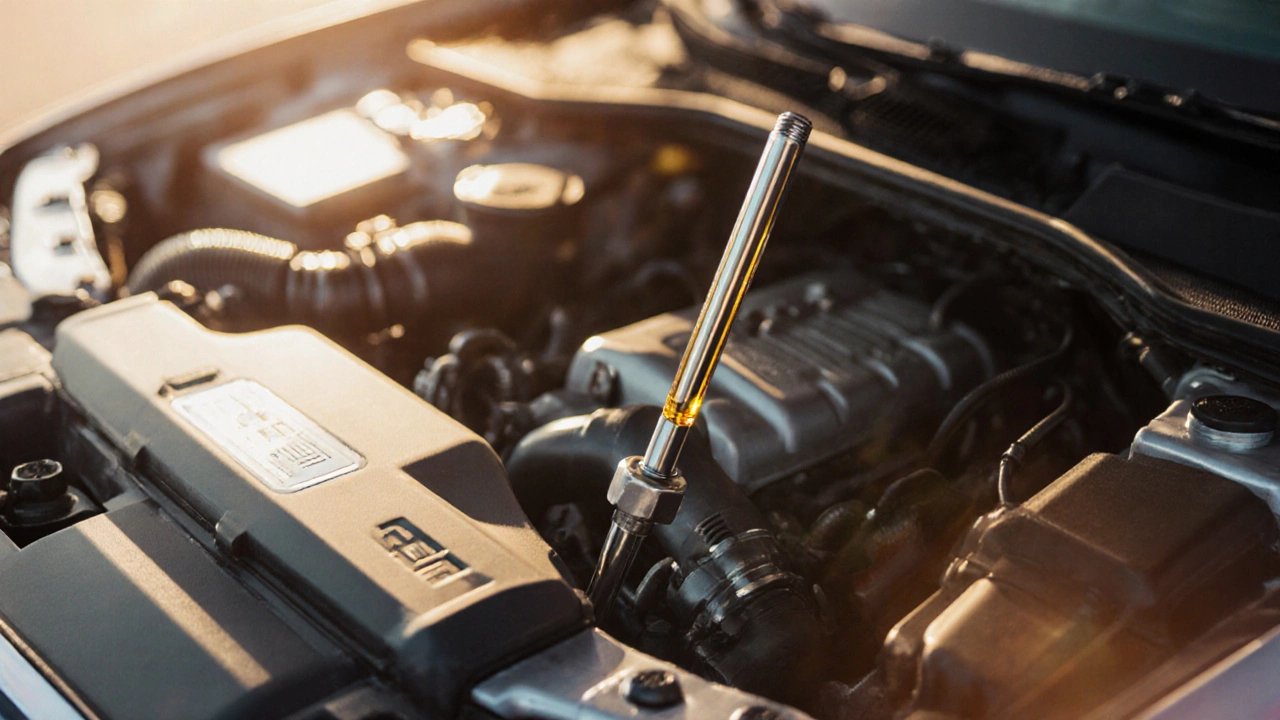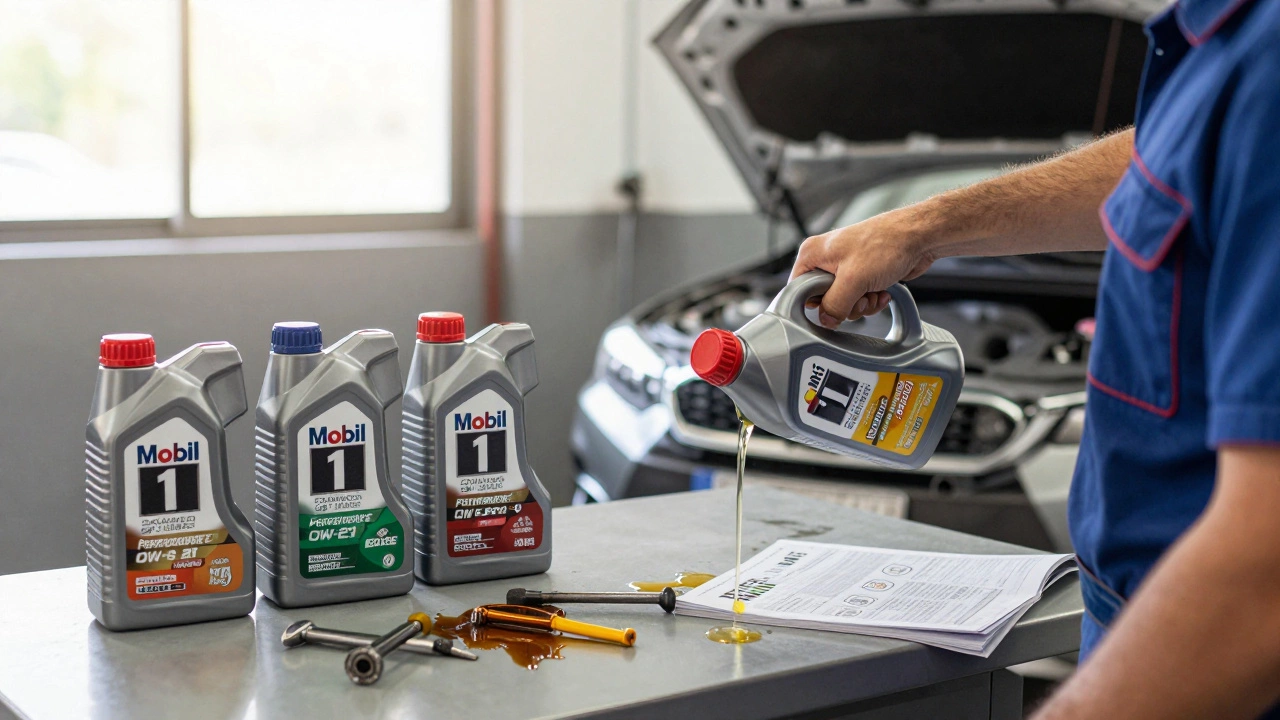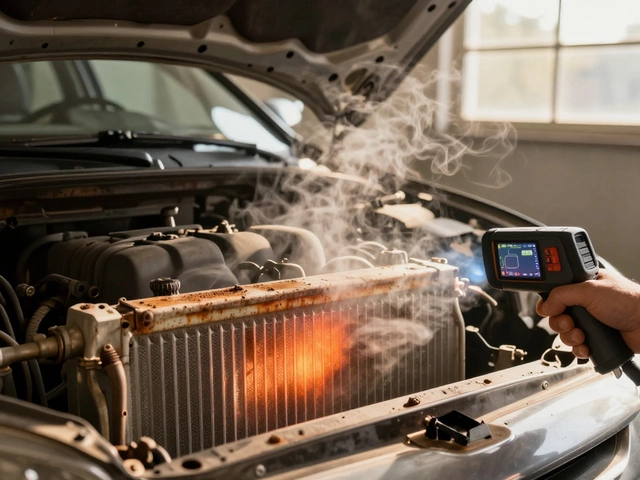Engine Oil Basics – What Every Driver Should Know
Engine oil is the lifeblood of your car. It lubricates moving parts, carries heat away, and keeps the engine clean. Most drivers think of oil only when the change light flashes, but paying a little attention every week can stop big problems later.
First, understand the two main types: conventional and synthetic. Conventional oil is cheaper and works fine in older cars. Synthetic oil lasts longer and handles extreme temps better, which is why many newer models recommend it. Your owner’s manual tells you the right viscosity (like 5W‑30) and which type the maker prefers.
When to Change Your Oil
Most people follow the "every 5,000 miles" rule, but that’s a rough average. Real life factors—short trips, heavy traffic, hot climate—break down oil faster. If you mostly drive city streets, aim for every 3,000‑4,000 miles. If you cruise on highways, you can stretch it to 7,000‑10,000 miles with synthetic oil.
Watch the oil change light, but also note how the oil looks. Fresh oil is amber and clear. Dark, gritty oil means it’s full of contaminants. Changing oil when it looks dirty, even if you’re under the mileage limit, can save you from sludge buildup.
Common Oil Warning Signs
Ignoring a low‑oil warning can wreck your engine. Here are the everyday clues most drivers miss:
- Oil pressure light – the dashboard flashes or stays on. It means the pump isn’t getting enough oil.
- Knocking or ticking noises – a dry engine makes a metallic click. It’s the metal parts rubbing without proper lubrication.
- Excessive exhaust smoke – blue or white smoke can signal oil burning inside the combustion chamber.
- Burning smell – a hot, acrid odor often means oil is leaking onto hot engine parts.
If any of these show up, stop driving, check the dipstick, and add oil if the level is low. Still, a quick visit to a mechanic is wise.
Checking the oil level is simple: park on level ground, wait a few minutes after turning off the engine, pull the dipstick, wipe it clean, re‑insert fully, then pull it out again. The oil should sit between the "min" and "max" marks. If it’s below min, add the recommended oil type right away.
Many drivers wonder how high the oil should be on the dipstick. The answer is literally the two marks printed on it. Too low means the pump can suck air, causing wear. Too high can lead to foaming, which reduces lubrication. Aim for the middle of the range for best protection.
Delaying an oil change feels harmless until you notice a drop in performance. The engine may feel sluggish, fuel consumption rises, and you might hear a faint rumble under the hood. Those are early signs that the oil isn’t doing its job.
In short, treat oil like a regular health check for your car. Look at the dipstick, listen for odd sounds, and stick to a realistic change schedule based on how you drive. By staying on top of these simple steps, you’ll keep your engine smooth, avoid expensive repairs, and enjoy a longer ride life.

Does the Engine Need to Be Running When Adding Oil? Here's What Really Happens
Adding engine oil with the engine running is a common mistake that can lead to overfilling and engine damage. Learn the correct way to check and add oil for maximum engine life and safety.
CONTINUE READING
How Long Is Too Long Without an Oil Change? Real-World Limits for Modern Engines
Knowing when to change your engine oil isn't just about mileage-it's about how you drive, your climate, and the oil type. Going too long can destroy your engine. Here's what actually matters.
CONTINUE READING
What Is Engine Oil Used For? The Simple Truth About Keeping Your Engine Alive
Engine oil isn't just for lubrication-it cools, cleans, seals, and protects your engine. Learn what it actually does and why skipping oil changes is a costly mistake.
CONTINUE READING
Adding an Extra Quart of Engine Oil - Risks, Effects, and How to Fix It
Find out if adding an extra quart of engine oil can damage your car, how it affects performance, and step‑by‑step ways to fix over‑fill safely.
CONTINUE READING
What Happens If You Don’t Change Engine Oil? Risks, Costs, and Fixes (2025)
Skip oil changes and your engine turns oil into sludge, wears faster, and risks big repair bills. See the stages of damage, warning signs, costs, and what to do now.
CONTINUE READING
How Long Can I Drive With Low Oil? The Real Risks Explained
Worried about that low oil warning light? This article explains what really happens if you drive with low oil in your engine. Find out how far you can realistically go, the risks you’re taking, and the signs you should never ignore. Learn from real everyday scenarios and get useful tips for preventing engine damage. Understand what your car’s trying to tell you before a little problem becomes a big repair bill.
CONTINUE READING














